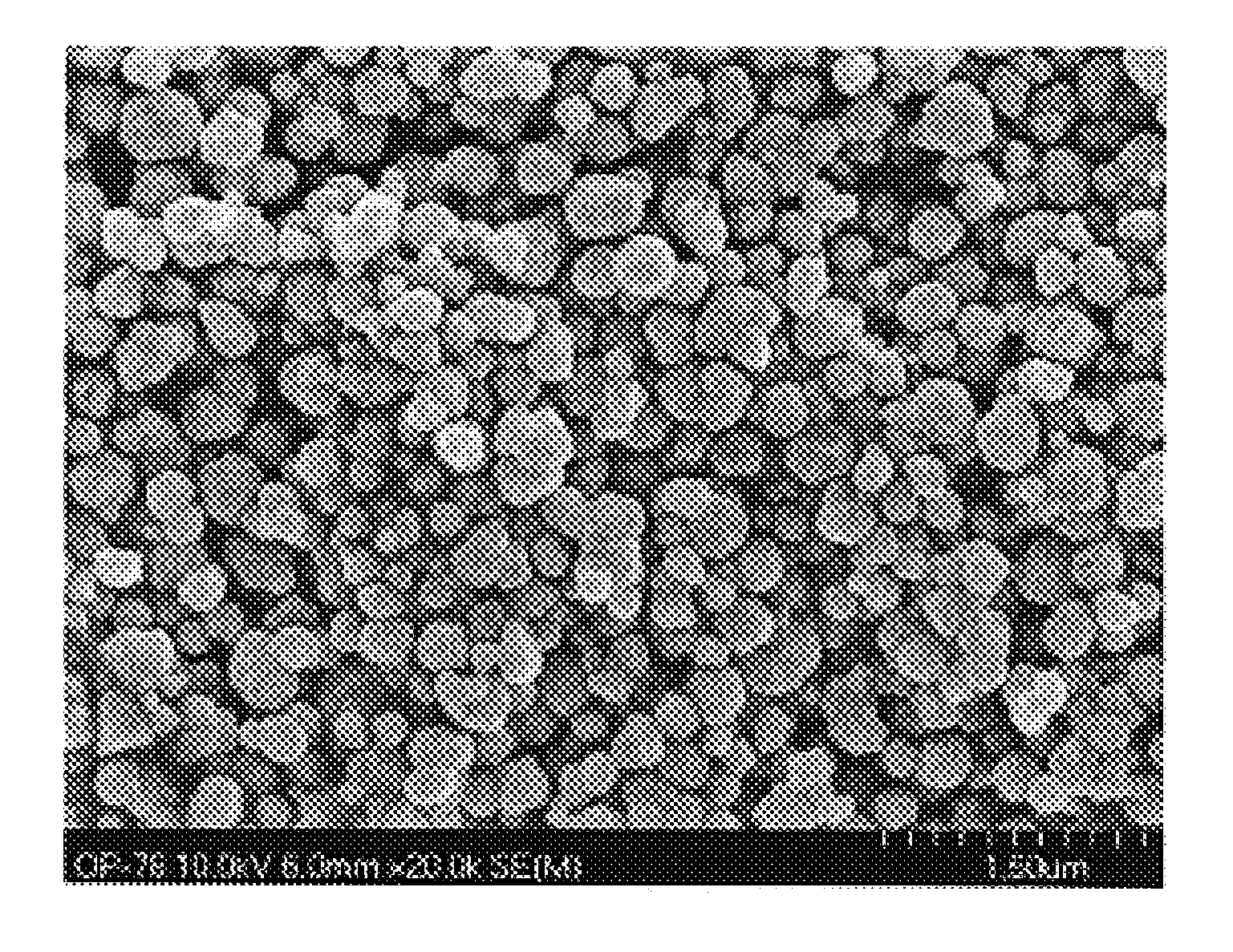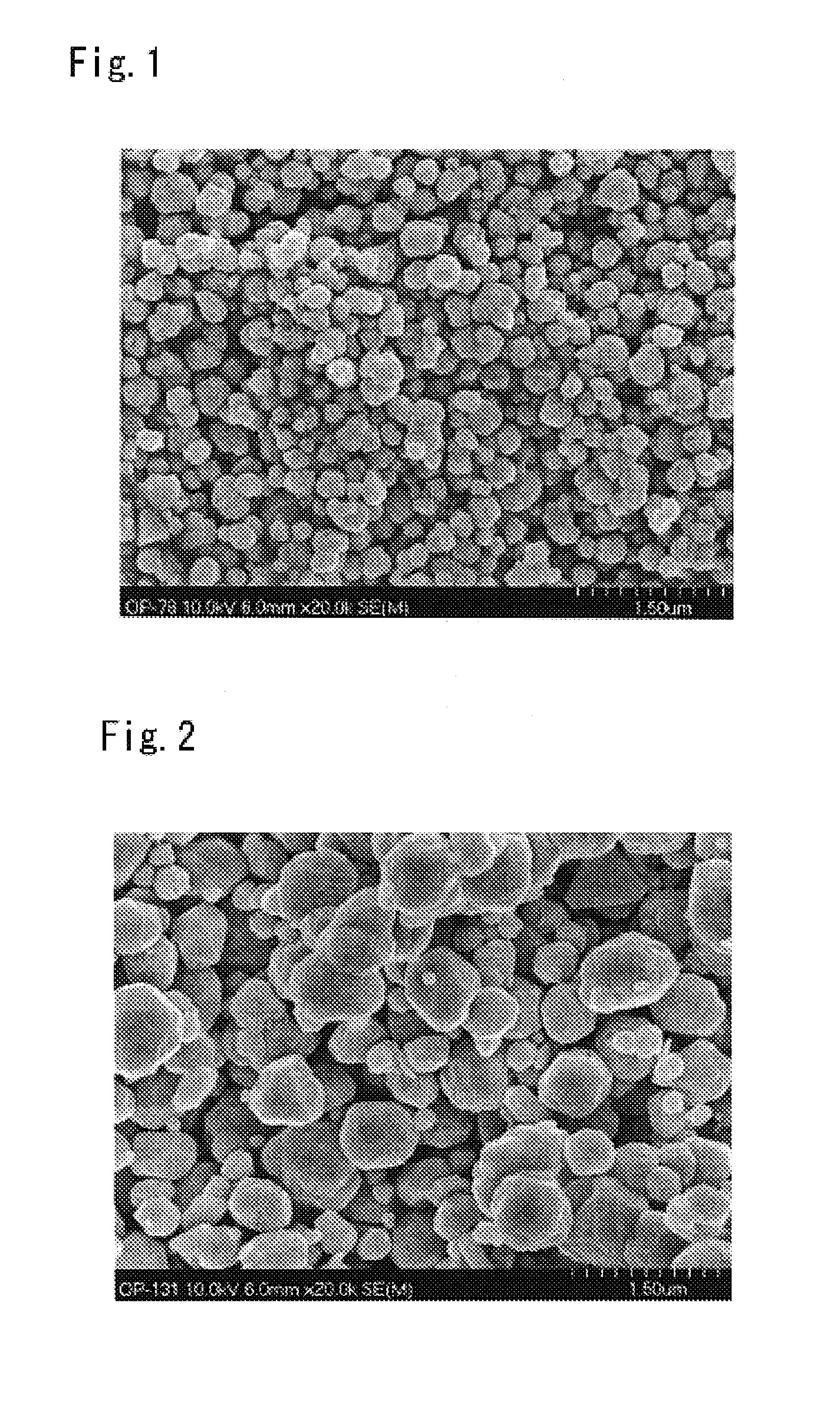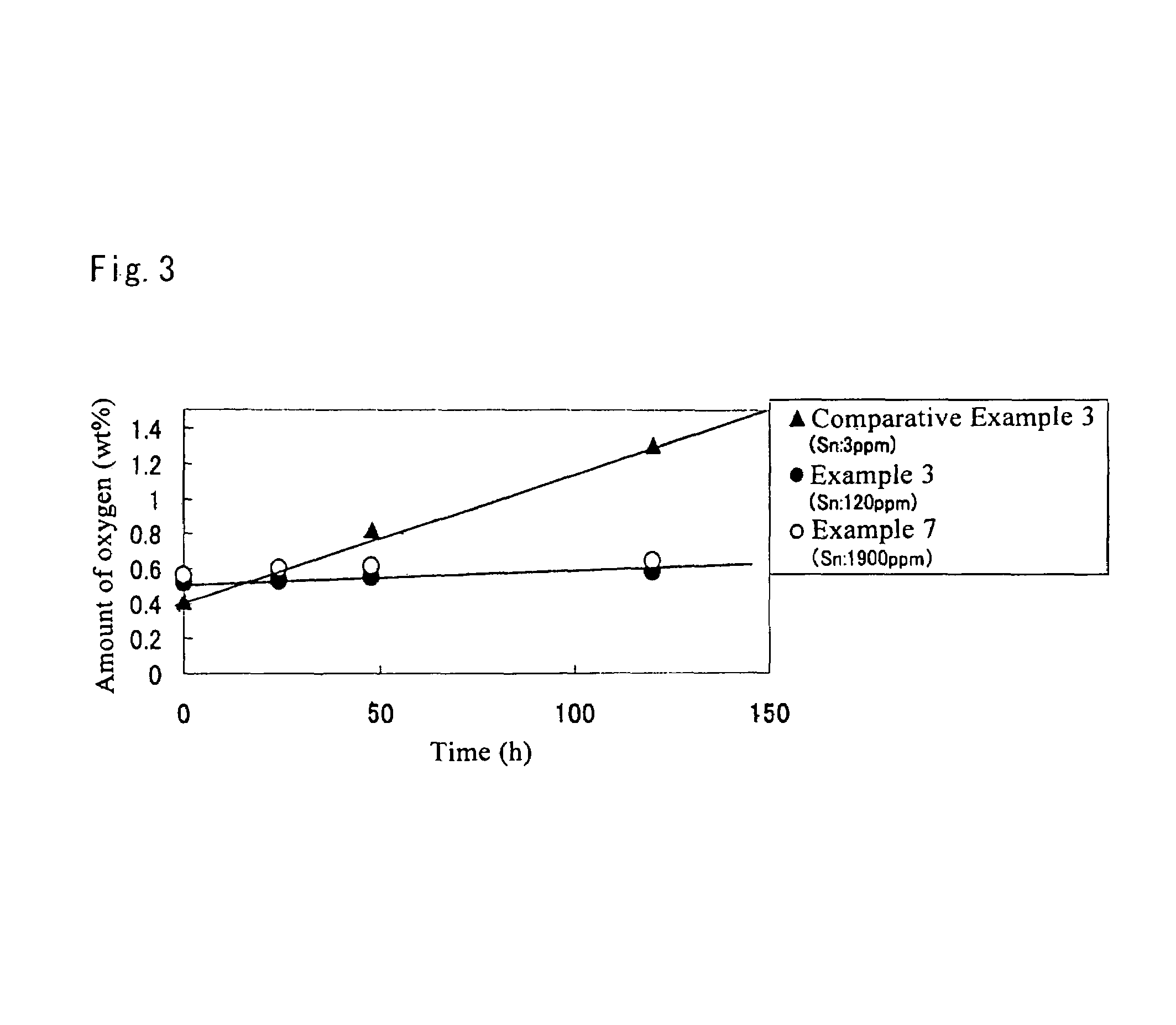Method of producing copper powder and copper powder
a technology of copper powder and powder, which is applied in the direction of fastening means, mechanical devices, rod connections, etc., can solve the problems of difficult reaction control, long time-consuming and laborious, and difficult to obtain copper powder of the desired particle diameter and particle size distribution, etc., and achieves high cost performance and enhanced weatherability of copper powder.
- Summary
- Abstract
- Description
- Claims
- Application Information
AI Technical Summary
Benefits of technology
Problems solved by technology
Method used
Image
Examples
example 1
[0037]Electrolytic cuprous oxide of an average particle diameter of 3 μm was prepared. The prepared electrolytic cuprous oxide had a broad particle size distribution, i.e., 50% or more of all particles fell outside the range of 3 μm±1 μm. The Sn content of the electrolytic cuprous oxide was 0.01 mass %. This electrolytic cuprous oxide, 135 g, was dispersed in 3,750 g of pure water. The dispersion was added with 7.5 g of cuprous chloride as water-soluble copper salt and 15 g of polyvinyl alcohol as protective colloid and then heated to 40° C. under stirring. To the heated mixture were added 100 g of 80% hydrazine hydrate as reducing agent and 22.5 g of acetic acid as complexing agent. The resulting liquor was heated to 60° C. over one hour and then held at 60° C. for another hour to allow the reduction reaction to proceed. The liquor after reaction was subjected to solid-liquid separation and the recovered solids were washed with water and dried to obtain a copper powder. The copper ...
example 2
[0039]A copper powder was obtained in the same manner as in Example 1 except that the amount of cuprous chloride used was changed to 3.0 g. The copper powder was observed under a scanning electron microscope (SEM) and the diameters of the particles within the field of vision were measured. It was found that the average particle diameter Dm was 0.5 μm and that the particle diameter of at least 80% of all particles of the copper powder fell in the range of 0.7 Dm -1.3 Dm.
example 3
[0040]To 3,750 g of pure water were added 7.5 g of cuprous chloride as water-soluble copper salt and 15 g of polyvinyl alcohol as protective colloid. The result was heated to 40° C. under stirring, whereafter 100 g of hydrazine hydrate was added as reducing agent. To the resulting reaction liquor (slurry) was added 135 g of the same electrolytic cuprous oxide as used in Example 1 and 22.5 g of acetic acid as complexing agent. The resulting liquor was heated to 60° C. over one hour and then held at 60° C. for another hour to allow the reduction reaction to proceed. The liquor after reaction was subjected to solid-liquid separation and the recovered solids were washed with water and dried to obtain a copper powder. The copper powder was observed under a scanning electron microscope (SEM) and the diameters of the particles within the field of vision were measured. It was found that the average particle diameter Dm was 0.3 μm and that the particle diameter of at least 80% of all particl...
PUM
| Property | Measurement | Unit |
|---|---|---|
| particle diameter | aaaaa | aaaaa |
| particle size | aaaaa | aaaaa |
| particle diameter | aaaaa | aaaaa |
Abstract
Description
Claims
Application Information
 Login to View More
Login to View More - R&D
- Intellectual Property
- Life Sciences
- Materials
- Tech Scout
- Unparalleled Data Quality
- Higher Quality Content
- 60% Fewer Hallucinations
Browse by: Latest US Patents, China's latest patents, Technical Efficacy Thesaurus, Application Domain, Technology Topic, Popular Technical Reports.
© 2025 PatSnap. All rights reserved.Legal|Privacy policy|Modern Slavery Act Transparency Statement|Sitemap|About US| Contact US: help@patsnap.com



